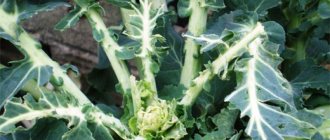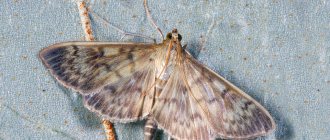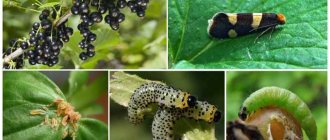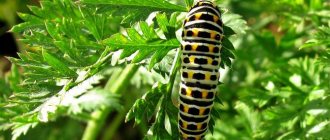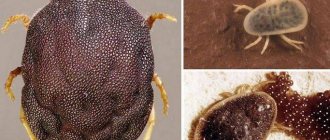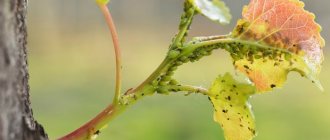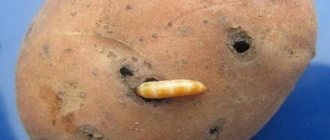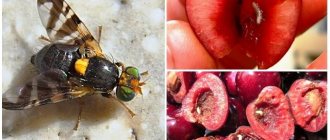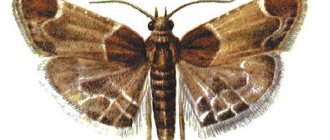Home Diseases and pests
If you think that diseases and pests only threaten trees that bear fruit, you are deeply mistaken. The most common deciduous trees (birch, oak, maple, willow, linden and many others) are equally susceptible to these scourges, and without proper measures, insects and infections can destroy entire forest plantations. Particular care must be taken in treating trees against diseases and pests in the garden, since even the most resistant common species are easily infected by pampered fruit crops.
- 2 Spraying birch in spring, summer and autumn to destroy tree pests
- 3 Oak diseases and tree protection in spring, summer and autumn
- 4 Oak pests and how to treat trees in spring, summer and autumn
- 5 Willow diseases and what to spray on trees
- 6 Willow insect pests and tree treatments
- 7 Diseases and pests of chestnut: photos and treatment of trees
- 8 Maple diseases: what to spray on trees in spring, summer and autumn
- 9 Maple pests and what to spray on trees
- 10 Diseases and pests of linden: photos and means for spraying trees
- 11 Rowan diseases and how to treat trees
- 12 Rowan pests: how to treat trees in spring and summer
- 13 How to deal with diseases and pests of the bird cherry tree
Fungal diseases of birch bark: photos and treatment of trees
The first section of the article is devoted to the protection of birches (BETULA). Here you will learn how to treat these trees against pests and diseases in spring, summer and autumn.
A real tinder. The causative agent is the fungus Forties fomentarius (L.) Gill. Causes white marbled, heartwood-sapwood rot of the trunk. When damaged by this disease, the wood of deciduous trees turns brown, later becoming yellow-white with brown-black sinuous lines. Radial cracks with leathery films of mycelium appear, large, perennial, hoof-shaped, wide-based, fruiting bodies with a diameter of 10-40 cm are formed on the bark. The surface is gray or gray-black, sometimes brown with wide concentric zones.
Worlds of struggle. Removal of dead trees, uprooting of stumps. The fruiting bodies are cut off, the cuts are disinfected with a 3-5% solution of copper sulfate, and covered with oil paint.
Cytosporosis. The causative agent is the fungus Cytospora horrida Sacc. Numerous black or dark gray bumps form in the affected cortex, protruding from cracks. With this bark disease, young trees dry out.
Control measures. When treating trees against diseases in the spring, spraying is carried out before the leaves bloom with Bordeaux mixture or its substitutes.
Brown spot. The causative agent is the fungus Marssonina betulae Magn. From mid-summer, the spots on the leaves are brown, round or irregular in shape with a dark edge. With this fungal disease of trees, dark brown sporulation pads form in the necrotic tissue.
Control measures. Disposal of fallen leaves. To treat trees from this disease, spraying with 1% Bordeaux mixture or its substitutes is carried out.
Main types of pests
Wood is threatened by several types of pests: the most dangerous among them are termites, bark beetles and shashel, which is also called the wood-boring beetle. Just one colony of termites can completely destroy the rafter system of a house in one year, causing the roof to collapse. Wood beetles can destroy all walls and partitions in three years. The bark beetle primarily destroys the upper layers of the tree - it lives in places where the bark adheres to the fibers. This leads to the appearance of characteristic marks on the surface of the lumber; they become much less durable.
The presence of pests can be detected by several characteristic signs:
- The burrow environments are on the remains of the bark; they are usually visible to the naked eye. Winding stripes indicate that the tree is infested with a bark beetle.
- Reduced weight of the board or beam, the appearance of holes on the surface. This is a clear sign of damage to the wood-boring beetle (shashel).
- The appearance of wood flour - dark brown dust. It is the result of wood processing by almost all insects, therefore it is a universal feature.
The hardest thing to spot is a termite colony. They make hidden passages in the tree, invisible from the surface. In this case, the wood is destroyed very quickly.
Spraying birch in spring, summer and autumn to destroy tree pests
Birch sapwood Scolytus ratzeburgi Jans. A black shiny beetle with an obliquely cut abdomen. Sapwood birds fly in June and live in families. The male gnaws a hole into the mating chamber, into which several females come. Each female gnaws through the longitudinal uterine canal and lays eggs in the egg chambers on the sides. The larvae of these pests of deciduous trees make ray-shaped passages, clogged with brownish dust, with cradles for pupae. When there are large numbers of trees, they dry out.
Control measures. Removing dried trees, spraying trunks during the flight of beetles with Decis Profi. Injections of the same drug into the openings of the cortex - ampoule/1 m2.
Birch sawfly Cimbex femorata L. The insect is black, 20-28 mm long, flies in June. The larva (false caterpillar) is green with a thin black longitudinal stripe on the back; it feeds on leaves in July - August. Pupates in a cocoon in the ground.
Control measures. To treat these trees against pests, they are sprayed with one of the following preparations: Kinmiks, Fufanon, Iskra, Inta-Vir.
Early brown-gray armyworm Orthosia gothica L. Gray butterfly with a wingspan of 35-37 mm. The caterpillar is green, with a green head, and three whitish-yellow lines on its back. Caterpillars feed in April - May on deciduous trees and herbaceous plants.
Control measures. The same as against the birch sawfly.
Pests damaging buildings
Mushrooms
A house mushroom that is found on various types of building structures. This mushroom is very dangerous. It consists of long threads, and along them, the fungus conducts water deep into the wood, even penetrating into masonry. This mushroom extracts water from the air. The fungus causes brown rot that destroys the wood.
Warty brown mushroom. It appears on damp old and new buildings. This fungus is also dangerous and has great destructive power, but you can get rid of it by simply drying the wood. Without the required amount of moisture, this type of mushroom dies.
A type of fungus that simply falls asleep when the wood dries out, and when the necessary moisture appears, it continues its destructive life activity for the wood. This mushroom is called white porous.
Gleophyllums eat the wood from the inside, wood rot appears and it is often impossible to determine whether the wood is affected by examining the structure. Just like the porous one, it goes into hibernation in case of insufficient moisture, and wakes up if it occurs.
Another species causes damage to wood, which leads to the appearance of blue rot. And this type of mushroom is called, accordingly, blue mushrooms. If the wood has a certain moisture content and is covered with a protective coating, then these fungi will tear the coating off the wood and the destruction will continue.
Insects
There are four main types of insects that destroy wooden buildings.
Female house lumberjacks lay more than four hundred eggs in cracks in wood, mostly in parts with a large cross-section, such as doors, floors, frames, etc. These insects remain in the larval state for an average of five years, and all this time, every day, each larva gnaws a hole the size of its body. The length of the larva is from two millimeters after it hatches and up to thirty millimeters in adulthood.
The next pest is the common beetle grinder. Does not spoil wood as quickly as the previous type. Most of these larvae can be found in furniture legs, wooden utensils, and railings. The female of this beetle lays about thirty eggs, and the larvae live after hatching for about three years before becoming insects.
The parquet beetle, or sapwood as it is also called, causes no less harm. The larvae of this beetle thrive in humidity levels as low as 7%. They gnaw through the wood along the grain and the early wood is completely destroyed. It is possible to understand that a manufactured item is infected with such a larva only after several years.
But horntail larvae can get into the structure with fresh wood. These larvae can eat materials that may be adjacent to the wood, such as carpeting, film, and even lead!
The larvae of all beetles live in wood until they become beetles. As soon as the larva turns into a beetle, the beetle gnaws only one hole in order to get out.
Subscribe to our Yandex.Zen channel
Oak diseases and tree protection in spring, summer and autumn
Here you will learn how to treat trees such as oaks (QUERCUS) against diseases in spring, summer and autumn.
Oak sponge. The causative agent is the fungus Daedalea quercina (L.) Fr. - causes dark brown heart rot of wood. The fruiting bodies are perennial, imbricate, in the form of flat caps, thickened at the base and with a sharp edge. The surface is brown, grayish-brown with unclear zones.
Control measures. Removal of dead trees, uprooting of stumps. The fruiting bodies are cut off, the cuts are disinfected with a 3-5% solution of copper sulfate, and covered with oil paint.
Stepped (ordinary, nectria) cancer . The causative agent is the fungus Nectria galligena Bres. Causes the appearance of brown drying spots on the bark, under which ulcers with raised edges are exposed, first closed, and eventually open, due to the death of the wood.
As can be seen in the photo, with this disease, whitish-cream sporulation pads are often visible on trees around the ulcers:
Control measures. Pruning branches, removing dead trees. The ulcers are cleaned, disinfected with a 3-5% solution of copper sulfate, and covered with oil paint. What else can be used to treat trees against this disease? Spraying with Bordeaux mixture or its substitutes is used before the leaves bloom.
Powdery mildew . The causative agent is the fungus Microsphaera alphitoides Griff, et Maubl. - causes the appearance of a dense white coating on the leaves and young shoots, in which small black fruiting bodies are formed. The leaves turn brown and dry out.
Control measures. Collection of plant residues, preventive spraying with preparations: speed, pureflower, keeper, thiovit Jet.
Brown spot . The causative agent is the fungus Phyllosticta quercus Sacc. et Speg. - causes the appearance of light brown or light brown spots with a brown border. Small black pycnidia are formed on the upper side.
Control measures. Collecting plant residues, spraying with Bordeaux mixture or its substitutes.
Oak pests and how to treat trees in spring, summer and autumn
Oak green leaf roller Tortrix viridana L. The butterfly is light green, wingspan 18-23 mm. The caterpillar is fusiform, dirty green, 15-18 mm long, the head is brown-black, the body is covered with black-brown warts with short hairs. The eggs overwinter on the bark; in the spring, the caterpillars bite into the buds, skeletonize, and later gnaw off the leaves. Having finished feeding, they pupate in cocoons on the leaves. One generation develops.
Control measures. What can you spray these trees against pests in the spring? Spraying is carried out with the following preparations: kinmiks, fufanon, spark, Inta-Vir, fitoverm.
Apple-shaped gallworm Diplolepis quercusfoll L. A small insect 2.0-4.4 mm long with wings. Females overwinter in large (10-22 mm), juicy white-yellow galls on fallen leaves. In the spring, eggs are laid on the buds, where the hatched larvae create small yellow-pink galls 2-3 mm in size with small hairs. Males and females emerge from these galls in June. After fertilization, females lay eggs in leaf tissue.
Control measures. Collection of plant residues, spraying during flight with preparations: Kinmiks, Fufanon, Spark, Inta-Vir, Fitoverm.
Willow diseases and what to spray trees with
Below we describe how to spray a willow tree (SALIX) against diseases.
Stepped (ordinary, nectria) cancer . The causative agent, the fungus Neonectria galligena, causes the formation of multi-stage cancerous wounds on trunks and thick branches. The mycelium of the pathogen develops in bark and sapwood for many years. In this case, the affected wood dies, and the healthy tissue adjacent to it grows vigorously, forming swellings in the form of ridges. The developing mycelium penetrates the healthy tissues of the influx, causing them to die. A new influx appears nearby, which is also affected and dies.
Control measures. Pruning branches, removing dead trees. The ulcers are cleaned, disinfected with a 35% solution of copper sulfate, and covered with oil paint. To protect these trees from the disease, treatment is carried out before the leaves bloom with Bordeaux mixture or its substitutes.
Cytosporosis. The causative agent - the fungus Cytospora chrysosperma (Pers.) Fr. - causes browning of the bark on thin branches, drying out and the formation of numerous dark gray tubercles - pycnidia - in the affected bark. The affected bark gradually dies off, individual branches and trees dry out.
Control measures. Removing dried branches and trees. Preventive and eradicating spraying of trees before leaves bloom with Bordeaux mixture or its substitutes.
Rust. The causative agent is the fungus Melampsora salicina (Lev.) Kleb. - causes the formation of yellow-orange sporulation pads on the underside of the leaf, covering the entire surface. The fungus has many hosts; intermediate hosts can be onions, larch, currants, and euonymus. With severe damage, decorative properties are reduced and premature leaf fall is observed.
Control measures. Collection of plant residues, preventive spraying in spring with Bordeaux mixture or its substitutes.
These photos show how trees are treated for diseases:
Willow insect pests and tree treatments
Shoot aphid Clavigerus salicis L. A small sucking insect that feeds on young shoots and causes their deformation and abnormal development. Does not migrate.
Control measures. When treating trees against pests in spring, summer and autumn, preventive and eradicative spraying is carried out with one of the following preparations: Fitoverm, Kinmiks, Fufanon, Iskra, Inta-Vir.
Poplar red-winged leaf beetle . Blue-green beetle, 10-12 mm long, with red or yellow-red elytra and a black dot at the top. Two generations develop per year. The beetles overwinter in leaf litter. In May they come out and gnaw out leaf tissue, leaving the main veins. Females lay eggs on leaves in groups of 20-30 pieces. The first generation larvae feed in June-July, skeletonizing leaves from the upper side and later, gnawing out leaf tissue. They pupate on leaves in July, the pupae are attached to the leaf and hang upside down. The second generation develops in August-September. The leaf beetle also damages aspen and poplar.
Control measures. Collection of plant residues. Preventive and eradicating spraying with one of the drugs: fitoverm, kinmiks, fufanon, spark, Inta-Vir.
Willow frog Aphrophora salicis Deg. A small insect 10-11 mm long, yellowish-brown, elytra with a yellow spot and an oblique dark stripe. The larvae are red-brown, mottled, surround themselves with foamy secretions, and feed on tissue juice.
Control measures. To spray trees against these pests, the following drugs are used: Fitoverm, Kinmiks, Fufanon, Iskra, Inta-Vir.
Diseases and pests of chestnut: photos and treatment of trees
The next section of the article is devoted to the fight against pests and diseases of the chestnut tree.
Endothium cancer. The causative agent is the fungus Endotia parasitica (Murr.) And. et And. The crown of the trees is lacy, the leaves are small, underdeveloped, dry out and do not fall off, there are a lot of dry branches.
Pay attention to the photo - with this tree disease, numerous underdeveloped weak shoots grow on the trunks, which die over time.
The bark is red-brown , later yellow, cracking, fruiting bodies protrude in the cracks in the form of yellow, red-brown tubercles, under the bark a fan-shaped mycelium of white-yellow or orange color develops. Over time, stepped depressed cancerous ulcers of various shapes and sizes form on the trunk and branches - from several centimeters to several meters.
Control measures. Using healthy planting material, timely removal of dry branches and dried trees, spraying with Bordeaux mixture or its substitutes. Cleaning of ulcers, disinfection with 3% copper sulfate, coating with oil paint.
Bacterial cancer. The causative agent - the bacterium Agrobacterium tumefaciens (Sm. et Town.) Conn. - causes the formation of grayish-white, brown growths-tumors up to 10-12 cm in diameter on the roots and root collar, which darken and rot over time. Affected young trees stop growing and gradually dry out. The infection persists in plant debris and is transmitted with planting material and soil pests.
Control measures. Culling, spraying with copper-containing preparations. Single tumors are cut off, sections are disinfected with 1-3% copper sulfate, and covered with oil paint.
Red-brown spotting. The causative agent is the fungus Phyllosticta sphaeropsoidea Ell. et Ev. The spots are large red-brown or ocher, round or irregular in shape, often located along the edges of the leaf blades. Over time, pinpoint black pycnidia form.
Control measures. Collection of fallen leaves. Spraying with Bordeaux mixture or its substitutes.
Powdery mildew. The causative agent is the fungus J. flexuosa Peck. — A delicate white cobwebby coating on both sides of the leaf. By autumn, numerous small, dark fruiting bodies are formed.
Control measures. Collecting fallen leaves, spraying with preparations: speed, pureflower, keeper, thiovit Jet.
Chestnut moth. Chestnut leaf miner, or Ohrid miner Cameraria ohridella Deschka & Dimic. - red-brown butterfly with a wingspan of 7-9.5 mm. The caterpillar is yellowish-green - 4.5-6 mm. The pupae overwinter in a litter of leaves; in the spring, butterflies fly out and lay eggs one at a time on the leaves. The caterpillars produce reddish-brown mines that are round or irregular in shape.
Control measures. Collection and destruction of fallen leaves with mines in the fall. When spraying trees against these pests in the spring when the leaves bloom, the following drugs are used: kinmiks, fufanon, actara, spark, Inta-Vir.
Watch a video of proper spring treatment against pests and diseases in spring, summer and autumn:
Shields
Order: Hemipterans, or arthropodous. They belong to the superfamily of scale insects. Kinds:
- false scale insect;
- juniper;
- fir;
- spruce;
- pine.
Description:
- small insects not exceeding 1.5 mm in size;
- females are wingless, motionless;
- there is no clear division into head and abdomen;
- the shape can be different, depending on the type: oval, elongated, round, pear-shaped.
Signs of plant infection:
- the growth of young seedlings slows down or stops altogether;
- the affected shoots become severely bent and begin to dry out, and then die;
- The yew false scale insect only harms those conifers that are in the shade, as it does not like the sun.
The problem is that conventional chemical methods of combating scale insects do not work, since they are protected by a durable chitinous shell. Therefore, settlements of these pests on conifers are removed mechanically, manually. They are scraped off the trunk and branches and destroyed. The bark is then washed with a concentrated solution of laundry soap.
Maple diseases: what to spray on trees in spring, summer and autumn
Here you will learn about protecting trees such as maples from pests and diseases.
False tinder fungus . The causative agent is the fungus Phellinus igniarius (L. et Fr.) Quel. - causes white heart rot of trunks, when the wood turns whitish-yellow and crumbles. Black sinuous lines in the form of concentric rings are visible along the perimeter. The fruiting bodies on the bark are woody, perennial, of various sizes, cushion-shaped, hoof-shaped or prostrate. The surface is dark to black, with concentric grooves. Rot develops in the lower and middle parts of the trunk, causing the affected trees to suffer greatly from windbreaks. Affects many deciduous trees.
Control measures. Removal of dead trees, uprooting of stumps. The fruiting bodies are cut off, the cuts are disinfected with a 3-5% solution of copper sulfate, and covered with oil paint. Preventive spraying of trunks and young trees in the spring before leaves bloom with copper-containing preparations.
Stepped (ordinary, nectria) cancer . The causative agent, the fungus Neonectria galligena, causes the formation of multi-stage cancerous wounds on trunks and thick branches.
Control measures. Pruning branches, removing dead trees. The ulcers are cleaned, disinfected with a 3-5% solution of copper sulfate, and covered with oil paint. When treating this maple disease, trees are sprayed with Bordeaux mixture or its substitutes before the leaves bloom.
Powdery mildew. The causative agent is the fungus Uncinula aceris Sacc. - causes the formation of a white cobwebby coating of mycelium on the leaves and young shoots, in which black dotted fruiting bodies are formed by autumn. Leaves dry out prematurely and fall off.
Control measures. Collection of plant residues, preventive and eradicating spraying with preparations: quick, pureflower, keeper, thiovit Jet.
Black spot. The causative agent is the fungus Rhytisma acerinum Fr. The spots are large, yellowish-green, 10-15 mm, round, with numerous angular black dots on the surface. By autumn, the spots merge, turn black, and become surrounded by a yellow border. Affected leaves dry out prematurely and trees lose their decorative properties.
Control measures. Collection of fallen leaves, preventive spraying with copper-containing preparations.
Tree pest control
As in medicine, methods are divided into prevention and treatment.
Preventive measures
This is a preliminary treatment of the material, which “discourages” insects from living in it.
Antiseptic treatment . The most affordable, but not the most unreliable method of processing lumber. The composition is applied to the surface of wood products before their storage or before their intended use. It is characterized by extremely low penetration of the solution deep into the wood species, only about one millimeter. The protection is temporary, on average from one to five years. After the expiration date, it requires new processing.
Thermal method - it requires special ovens, in which the wood is heated to 140 degrees Celsius. As a result of heating, the nutrients of interest to insects disintegrate. As a result of heating, moisture also evaporates, causing the wood to become denser. The disadvantage of this process is the cost. Thermally treated wood is much more expensive.
An autoclave is one of the best ways to protect wood. Used to protect the most expensive types of wood. An autoclave is a sealed container in which a product is placed. The antiseptic, supplied under pressure, penetrates deep into the wood structure, which protects it from insect pests. But the method is not cheap either. The cost of lumber processed in an autoclave increases by at least half.
Maple pests and what to spray on trees
Large maple aphid Drepanosiphum platanoides Schr. A small sucking, yellowish-brown insect with long black antennae and legs. The eggs overwinter under the bark, in the spring the larvae and adults feed on the buds and leaves, alone, developing 4-6 generations. In October, the females of these tree pests lay eggs.
Control measures. To protect trees in the spring from these pests, spraying is carried out with one of the following preparations: Kinmiks, Fufanon, Spark, Inta-Vir.
Maple shooter. Maple lancet Acronicta aceris L. is a grayish butterfly with a wingspan of 35-45 mm.
As you can see in the photo, the caterpillar of this tree pest is up to 50 mm long, covered with tufts of long yellow-red hairs, and has a row of diamond-shaped spots with a black border on its back:
It feeds from June to September, gnawing leaves of many species.
Control measures. Collection of single caterpillars. To protect trees from these insects, the following preparations are sprayed: kinmiks, fufanon, spark, Inta-Vir.
Gray bud weevil (Sciaphobus squalidus Gyll.)
Damages young trees of all fruit crops. This is an ovoid beetle 5-7 mm long. Larvae and adults overwinter in the soil. In spring, the beetles move to trees, where they damage buds and young leaves. The larvae feed on small roots in the soil.
Fighting methods:
1. In early spring, apply glue belts to the trees. 2. In case of mass appearance, spray the trunk and crown with a 0.6% solution of benzophosphate (prepared from 10%) or 0.9% solution of karbofos (obtained by diluting 10%).
Diseases and pests of linden: photos and means for spraying trees
This section of the article is devoted to the treatment of linden wood from pests and diseases in autumn, summer and spring.
Infectious drying out, or thyrostromosis. The causative agent is the fungus Thyrostroma compactum (Sacc.) Hoelm. Dark brown necrotic areas appear on the bark of branches and trunks, and the bark dies. Small black flattened fruiting bodies of the fungus form in the affected bark. The branches dry out, the crown thins out, and young trees quickly die.
Control measures . Removing dried branches and individual trees. The best remedies for this tree disease are copper-containing preparations.
Brown spot . The causative agent is the fungus Phyllosticta tiliae Sacc. et Speg. - causes the formation of brown spots on the leaves, irregularly rounded in shape with a diameter of 0.5-1 cm with a bright purple rim. Pycnidia are punctate, light brown, with spots on the underside. Petioles are often affected.
Control measures. Collection of fallen leaves, preventive spraying with copper-containing preparations.
Cream spot. The causative agent is the fungus Gloeosporium tiliae Oud. var. maculicolum All. - spots are small, 4-8 mm in diameter, cream-colored with a dark brown rim. Small dark sporulation pads form on the surface. Perianths and shoots are often affected.
Control measures. This tree disease should be treated in the same way as brown spot.
Common spider mite Tetranychus urticae Koch. A small pest, 0.25-0.43 mm long, feeding on the sap of plant tissue. Females overwinter under the bark and under the leaves, and in the spring they move to young leaves. When there is a large number of mites, the leaves turn yellow, become deformed and dry out. More than 10 generations develop over the summer. Damages almost all deciduous and herbaceous plants.
Control measures . Collection of fallen leaves. To treat trees against these insects, the following preparations are sprayed in the spring: fitoverm, fufanon, aliot, spark M, anti-mite.
Common red bug Pyrrhocoris apterus L. Large sucking insect of bright color, 9-11 mm long. The body and abdominal rim are red, the head, antennae, legs, and spots on the elytra are black. Bedbugs overwinter in crevices in the bark of trunks and stumps. In spring they come to the surface and form large clusters. Females lay eggs from May. The larvae feed until autumn on the sap of leaves of trees, shrubs, and herbaceous plants. In autumn they descend and crawl into crevices in the bark.
Control measures. How can you spray trees against these pests? To combat insects, spraying is carried out in the spring with one of the following preparations: fufanon, kinmiks, spark M, Inta-Vir.
Early yellow-brown cutworm Orthosia stabilis Schiff. Brownish-red butterfly with a wingspan of 35 mm. The caterpillar is green, with five yellowish longitudinal lines on the back and small yellow dots. The penultimate ring has a transverse yellow stripe. Pupae overwinter, butterflies fly in April, caterpillars feed from late May to June, roughly gnawing the leaves of trees and shrubs.
Control measures. Excellent products for treating trees against these pests are kin mix, fufanon, spark, Inta-Vir.
Rowan diseases and how to treat trees
The following describes how rowan trees are treated against diseases in autumn, summer and spring.
Stepped (ordinary, nectria) cancer . The causative agent, the fungus Neonectria galligena, causes the formation of multi-stage cancerous wounds on trunks and thick branches.
Control measures. Pruning branches, removing dead trees. The ulcers are cleaned, disinfected with a 3-5% solution of copper sulfate, and covered with oil paint. Trees are sprayed with Bordeaux mixture or its substitutes before the leaves bloom.
Tubercular necrosis of the cortex. The causative agent is the fungus Tubercularia vulgaris Tode. Causes death (necrosis) of the cortex. Leaves and shoots turn brown and dry out, numerous brick-red sporulation pads up to 2 mm in diameter appear on the surface of the bark, gradually turning brown. Many deciduous trees and shrubs are affected.
Control measures. Pruning branches, removing dead trees. Preventive spraying in spring with copper-containing preparations.
Septoria spot. The causative agent is the fungus Septoria hyalospora Sacc. f. aucupariae Thum. - causes the formation of brown spots on the upper side of the leaf, and the fungus Septoria sorbi Lasch. - on both sides of the sheet. By autumn, black dotted flattened pycnidia form in the tissues.
Control measures. Collection of fallen leaves, preventive spraying in spring and early summer with copper-containing preparations.
pine beetles
Beetles of the weevil family and bark beetle subfamily. Kinds:
- big pine (big gardener);
- small pine (small gardener);
- southern pine.
Description:
- body length 3.5-4 mm;
- color - shiny black (brown), body covered with small gray hairs;
- light brown antennae and paws.
Signs of plant infection are similar to those observed with bark beetles, since bark beetles belong to their subfamily:
- a woodpecker settling on one of the conifers;
- holes in the bark;
- light brown sawdust under the tree;
- yellowing and subsequent falling of needles;
- resin leaks;
- peeling of the bark.
It is almost impossible to fight the pine beetle. Injecting insecticides under the bark, into the insect's passages, sometimes does not achieve its final goal, but only drives the pest even deeper. Even the powerful Karbofos cannot cope with them. It remains to either take preventive measures in a timely manner (in the spring and during the summer), or hope for the self-defense of the pines. Strong, healthy trees begin to intensively exude resin, which seals the passages of insects, and they die without air inside.
Peak beetles are one of the most dangerous pests for coniferous trees. They affect not only wood, but also bast (hence the name) - the vital tissue of the plant. Thus, the transport of water and nutrients is disrupted. This leads to dehydration, exhaustion and dryness. Fungal infections carried by these insects accelerate the death.
Rowan pests: how to treat trees in spring and summer
Mountain ash mite Eriophyes piri var. sorbi Nal. A very small sucking pest with two pairs of legs. Lives and feeds in leaf tissues, causing the formation of irregularly shaped protuberances called galls. Galls are numerous, on both sides of the leaf, from yellowish-green to red-brown and drying out. Ticks overwinter under the bud scales, and several generations develop in the summer.
Control measures. Before the buds open, spraying is carried out - preparation No. 30. An excellent means for spraying trees against these pests during the growing season are the following preparations: Fufanon, Fitoverm, Iskra M, anti-mite.
Rowan aphid Yezabura sorbi Kalt. A small sucking insect of yellow-green and yellow-brown color, forming large colonies. It feeds on the underside of leaves, causing them to become deformed and curl into a spherical lump.
Control measures. Preventive and eradicating spraying with preparations in the spring: fitoverm, kinmiks, fufanon, spark, Inta-Vir.
Willow scale insect Chionaspis salicis L. A very small sucking insect, covered on top with a wide pear-shaped shield of light gray color, widened in the rear part. Eggs, 40-80 eggs each, overwinter under the shields of females. In the spring, bright red wandering larvae are born and crawl along the branches. One generation develops. Damages many deciduous trees and shrubs. With large numbers, individual branches and young trees dry out.
Control measures. Spraying the wandering larvae with preparations: fitoverm, actara, kinmiks, fufanon, spark, Inta-Vir.
How to deal with diseases and pests of the bird cherry tree
Below you will find out how you can treat bird cherry trees against pests and diseases in spring, summer and autumn.
False tinder. The causative agent is the fungus Phellinus igniarius (L. et Fr.) Quel. - causes white heart rot of trunks, when the wood turns whitish-yellow and crumbles.
Control measures. Removal of dead trees, uprooting of stumps. The fruiting bodies are cut off, the cuts are disinfected with a 3-5% solution of copper sulfate, and covered with oil paint. Preventive spraying of trunks and young trees in the spring before leaves bloom with copper-containing preparations.
Brown spot. The causative agent is the fungus Cercospora padi Bub. et Silver The spots on the leaves are very small, 0.5-3 mm in diameter, irregular in shape, often merging, falling out, whitish above, brown below. By autumn, small sclerotia form.
Control measures. Collection of fallen leaves. Preventive spraying with copper-containing preparations in the spring.
Bird cherry pockets. The causative agent is the fungus Taphrina pruni Fuck, var. padi Jacz. leads to deformation and ugly growth of the ovaries into brown sac-like formations 1-3 cm long. Inflated hollow fruits have no seeds, over time they become covered with a waxy, dirty-gray coating of sporulation, dry out and fall off.
Control measures. Collection of plant residues, preventive spraying with copper-containing preparations before flowering.
Bird cherry ermine moth Yponomeuta evonymellus L. Silvery-white butterflies with a wingspan of 23-25 mm. The caterpillars are fusiform, yellow-greenish-gray, 20-24 mm long, with grayish hairs on black warts. Younger caterpillars overwinter under the egg shield, from April they damage the buds and eat holes, skeletonize and completely gnaw off young leaves. They live in groups. Butterflies fly from July to August. Females lay up to 40 eggs on the bark under the scutellum.
Control measures. How to deal with these tree pests? To combat bird cherry moths, spraying is carried out in the spring with the following preparations: Fitoverm, Kinmiks, Fufanon, Spark, Inta-Vir.
Bird cherry leaf beetle Phytodecta quinquepunctatus F. A beetle 5.0-6.5 mm long, yellow in color with or without black spots on the elytra. The larvae are flat, green with 3 pairs of thoracic legs. Younger larvae skeletonize young leaves, older and adult beetles gnaw irregularly shaped holes on the leaves. One generation develops.
Control measures. To destroy these pests of trees, if there are a large number of larvae or beetles, the following preparations are carried out: kinmiks, fufanon, spark, Inta-Vir.
Rose leafhopper Typhlocyba rosae L. A small sucking insect, yellowish in color and 3-3.5 mm long. The eggs overwinter on branches; in spring, the larvae feed on the sap of leaves, on which numerous yellowish spots of necrosis appear. The leaves become marbled in color. The larvae feed in May-June and develop into nymphs and adult insects, which also feed on the undersides of the leaves.
Control measures. Spraying with preparations: fitoverm, fufanon, spark, kinmiks, Inta-Vir.
Now that you know how to treat trees against pests and diseases in spring, summer and autumn, do not miss the moment and try to protect your green spaces in a timely manner.
- Author: admin
Rate this article:
- 5
- 4
- 3
- 2
- 1
(10 votes, average: 5 out of 5)
Share with your friends!
Main wood destroyers
Wood is a privileged material in the private house-building industry. Not only are log and frame houses overwhelmingly constructed from wood, but many structural elements, such as window frames and rafters, are made exclusively from wood materials.
A negative feature of this building material is its susceptibility to the harmful effects of wood-boring insects. These dangerous wood pests are capable of thoroughly destroying the wood component of a house in one season. Therefore, you need to approach the fight against them thoroughly and first carefully study the potential enemy. You can use the services of professionals, for whom the bark beetle is not a problem at all, or you can fight it on your own.
Beetles are the main pests of wood
The main threat is not the woodworm itself, but its larvae. Wood is a breeding ground for the larvae and, settling in it, they literally eat the house throughout their entire growth period. Moreover, the larvae eat in entire families, numbering several hundred individuals per beam. The most insatiable of the entire species diversity of these pests are the larvae of bark beetles, shashels (grinders) and termite ants.
- Termites are the most efficient workers in the wood destruction industry. Forming huge masses, these pests are capable of destroying an impressive rafter system in less than a year, so it is important to identify and exterminate them in time. These “white ants” are practically invisible and inaudible and, often, they reveal themselves only when the wooden base of the building falls into a catastrophic state.
- Shashel is a seasoned and nimble pest, better known as the “grinder”, a real thunderstorm for everything wooden. The larvae of the shashel are equipped with impressive jaws, with the help of which it grinds any woody component into dust. For life, the larvae of the grinder do not need much of the woody mineral component, because a significant amount of the organic matter they process turns into waste. Therefore, the shashel instantly renders the tree unusable and the scale of its sabotage is impressive.
- Bark beetle This is a gourmet among woodborers, because it feeds exclusively on the subbark of wood, which is replete with nutritious acids. But still, the fact that bark beetle larvae do not destroy the base of the tree does not make them less dangerous pests.
